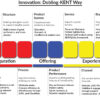
I am writiing this blog as a follow-up to my earlier blog, “Why ₹3.5 Crore May Become the New Definition of Retirement for Indians,” published on 05 August 2025.
In a world where financial stress is one of the leading causes of anxiety and reduced quality of life, the idea of achieving financial freedom in just five years might sound like a dream. But what if that dream could be broken down into a practical, achievable plan?
The visual blueprint, “Five Years to Financial Freedom,” lays out a clear, step-by-step plan to break free from paycheck to paycheck and create lasting wealth. There’s no quick fix or magic bullet—it’s a organized blueprint based on discipline, consistency, and smart money behaviour.
Let’s lay out each year of this plan separately, explaining how you can integrate it within your life and be responsible for where you go from here financially.
Year 1: Automate 10% of Your Income into Savings
The first step toward financial independence is deceptively simple: pay yourself first.
Automating 10% of your earning to savings makes it a no-brainer and does away with emotional interference to saving. Creating an automatic transfer from salary to a high-yield savings or investment account, you establish a cushion without any dependence on willpower.
Why 10%? Although 10% can vary depending upon income and obligations, it’s a beginning habit. If you cannot start from 10%, start from what you can, 5%, 2%—but begin something and continue to add to it.
Pro Tip: Use automation tools provided by banks or budgeting apps like YNAB, Mint, or Cube to schedule transfers right after payday, so you never “see” the money and are less tempted to spend it.
Year 2: Build an Emergency Fund of 6 Months’ Expenses
Once you have an ingrained saving habit, you should develop an emergency fund equivalent to six months of cost of living.
This fund acts as your personal safety net—it provides a buffer against life’s surprise shocks such as job loss, health crises, or surprise repairs. Without it, a small fiscal shock can set you back or land you in debt.
To calculate your emergency fund target, total your essential monthly expenses (rent, groceries, insurance, utilities, etc.) and multiply by six. Gradually divert your automated savings toward reaching this goal.
Pro Tip: Store your emergency fund in a distinct, liquid account—a high-yield savings account, for example—so it’s within reach but not too easily accessible to spend impulsively.
Year 3: Build a Side Hustle to Quantum Leap Your Income
With a stable financial base, it’s time to scale your income. Building a side hustle or additional income stream can accelerate your financial growth exponentially.
More than ever, you can now have a side hustle these days in our digital-first economy. Whether it’s freelancing, consulting, content creation, e-commerce, or teaching online, it can provide you a big boost to save and invest more.
The word “quantum leap” isn’t exaggeration. Most financially independent individuals have cited a side hustle to be the ticket to wealth creation. Unlike your 9-to-5 job, a side hustle has no revenue limit when it comes to its earning capacity.
Pro Tip: Select a side hustle to which you can apply your strengths, passions, and available time. Invest most of this revenue in savings or long-term investments, not lifestyle improvements.
Year 4: Invest a Growing Proportion of Your Profit
Until now, you’ve established the foundations of good money habits. Now it’s time to get your capital to work. Investing is how you realize genuine financial freedom.
Whatever it is – low-cost index funds, real estate, equity mutual funds, or retirement accounts, compounding growth of wealth is what matters when it comes to creating long-term assets.
Start by investing a portion of your income or profits, and gradually increase your contributions. It’s through compounding that small, regular investments transform into sizeable wealth over time.
Pro Tip: Begin with easy-to-understand investment options like SIPs in index mutual funds. Diversify across asset classes and consider consulting a certified financial planner to tailor a portfolio based on your risk profile.
Year 5: Let Your Money Habits Create Freedom
At this stage, your consistent savings, emergency buffer, side hustle, and investments begin to pay off. You’re no longer working just for money—your money is now working for you.
You’ve become financially confident and resilient. You can now make work optional, risk big, travel, pursue passion projects, or retire early. Notice, however, that it wasn’t luck that got you here, it’s your habits.
This is economic freedom: not having millions, but having options, peace of mind, and self-control.
Pro Tip: Review and update your financial goals. Consider tax optimization, estate planning, and charitable giving. Financial freedom also includes financial stewardship.
Most Important Ingredient: Hard Work and Consistency
At its center, there’s a simple reality: consistency wins out over intensity. No big paycheck or finance degree needed—only self-discipline, patience, and good habits repeated over months, years, or decades.
Challenges and curveballs will come, but if you abide by these values, the course of your life will be altered irrevocably.
Final Thoughts: Your Freedom Begins Today
Its virtue is its keep-it-simple, scalable nature. Whether you’re beginning in your 20s, restarting in your 40s, or looking to retire, it’s all applicable. There’s no too early, no too late to begin.
Automate your saving, build your buffer, boost your income, invest consistently, and stay the course. Your future you, five years from now, will thank you.
Make today count: start your journey to wealth, not someday, but now.
Dr. Prahlada N.B
MBBS (JJMMC), MS (PGIMER, Chandigarh).
MBA in Healthcare & Hospital Management (BITS, Pilani),
Postgraduate Certificate in Technology Leadership and Innovation (MIT, USA)
Executive Programme in Strategic Management (IIM, Lucknow)
Senior Management Programme in Healthcare Management (IIM, Kozhikode)
Advanced Certificate in AI for Digital Health and Imaging Program (IISc, Bengaluru).
Senior Professor and former Head,
Department of ENT-Head & Neck Surgery, Skull Base Surgery, Cochlear Implant Surgery.
Basaveshwara Medical College & Hospital, Chitradurga, Karnataka, India.
My Vision: I don’t want to be a genius. I want to be a person with a bundle of experience.
My Mission: Help others achieve their life’s objectives in my presence or absence!
My Values: Creating value for others.
Source Acknowledgment
This fiscal blueprint draws from a visual infographic posted by Empire Mindset | Wealth Architect (@guideforman) on X.com (formerly Twitter). The message stresses that “the most important factor is hard work and consistency”—reminding us all transformational change starts with self-disciplined action.
Leave a reply
















*Dr. Prahlada N. B Sir,*
Your "Five Years to Financial Freedom" guide is a beacon of hope for those seeking financial independence. Your step-by-step approach, emphasizing discipline and smart money behavior, is both practical and inspiring.
*Key Takeaways:*
– *Automate Savings*: Paying yourself first by automating 10% of your income into savings sets the foundation for financial freedom.
– *Emergency Fund*: Building a safety net equivalent to six months of living expenses provides peace of mind and financial security.
– *Side Hustle*: Creating an additional income stream can accelerate financial growth and boost savings.
– *Investing*: Letting your money work for you through smart investments can lead to long-term wealth creation.
– *Financial Stewardship*: Achieving financial freedom isn't just about accumulating wealth; it's also about responsible financial management.
Your guide resonates with the wisdom of preparing for the future, much like the Stark mantra "Winter is Coming" from Game of Thrones. Just as House Stark prepares for the harsh winters, we must prepare for life's uncertainties through smart financial planning.
*Inspiring Words:*
"Your future self, five years from now, will thank you for starting today. Make today count and begin your journey to wealth, not someday, but now."
Thank you, Dr. Prahlada N. B Sir, for sharing your expertise and empowering us to take control of our financial lives. Your dedication to creating value for others is truly commendable.
Reply